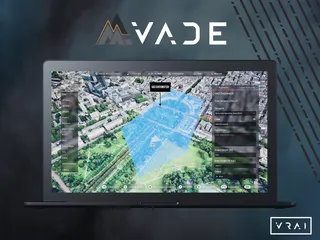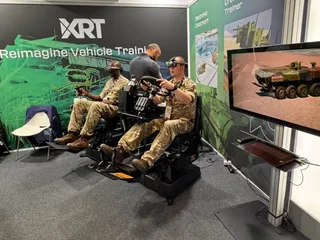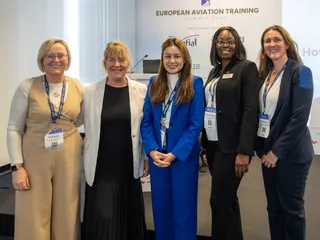Indo-Pacific MRO Developments: Recruit, Train and Retain in and Beyond Australia
Contact Our Team
For more information about how Halldale can add value to your marketing and promotional campaigns or to discuss event exhibitor and sponsorship opportunities, contact our team to find out more
The Americas -
holly.foster@halldale.com
Rest of World -
jeremy@halldale.com

The Recruiting Imperative
The CAE report of this 16 June that noted, in part, 416,000 aircraft maintenance technicians will be required around the world in the next 10 years has the global MRO community’s attention. Glenn Ryan, CEO of Aviation Australia, provided one laser-like focus on this projection when he spoke with the author this June. He noted from a home-nation perspective “about 60,000 years of experience is going to leave the Australian aircraft maintenance workforce in the next decade – about 22% of the workforce regardless of whether you look at it from avionics, mechanical or structures skillset perspective,” and added, “There are clearly some things we need to start acting on now.”
While converging forces set MROs in Australia and the broader Indo-Pacific apart from those in other regions, the community stakeholders are similarly seeking to align workforce supply to demand well beyond this decade.
Ryan next offered an intriguing dynamic not addressed in this MRO workforce series –of maintenance engineers moving to where the jobs are. The CEO cast a wide net on this trend, noting individuals are relocating in Europe, the US, the Middle East and different parts of Asia to seek better industry jobs. “Vietnam, for example, is rapidly expanding and is being caught in the workforce mobility model in a different way, in terms of personal decisions, organizational decisions and obviously workforce structure changes.”
A major, concurrent forcing function to support, encourage and facilitate workforce mobility in Indo-Pacific is the trend for an increasing number of nations to adopt EASA standards and regulations, better allowing the migration of these qualified individuals to move among nations and gain employment. Reflecting again on the Australian market, Ryan noted the workforce mobility issues for individuals trained to CASA standards, have the strong opportunity for cross-over and acceptance in other nations’ MROs. The CEO commented this places a greater emphasis on businesses having a strong focus on a strategic workforce as a priority to retain capability.
Ryan also used his regional knowledge to point out that countries which reach down into elementary and high schools to educate and inform the next generation about opportunities in maintenance and other aviation community jobs, tend to attract greater numbers of applicants to the industry. Australia is one nation that has stepped up its focus on vocational training for aviation and adjacent industries with each of the country’s seven states having its own approach to training in schools. Casting his gaze beyond Australia, he noted that while Singapore has been “very strong for a long, long time, to develop its educational pipeline with a look to the future,” he also observed efforts in Malaysia, the Philippines and Vietnam to build their institutions to match the persistent demand signal for new workforce members in maintenance and other aviation industry fields.
Train
Beyond recruiting new workplace accessions, training and retaining are also on the community’s horizon.
No doubt, Gen Z and other younger maintenance workforce members are digital natives and, as such, have a working knowledge and even demand for learning technologies in their training activities. The executive offered that more important, this cohort presents the bonus of better understanding overarching technology thrusts in the aviation space that will trickle down into maintenance requirements.
Aviation Australia’s Ryan then opened the aperture on technology a bit further, highlighting the evolution of SAF, hydrogen- and other propulsion advancements, and general automation. “The younger generation is more accepting and adopting how they can use technology,” he observed and noted regulators are taking different approaches to training to support these trends and their required skillsets. Ryan placed a marker down, stating the way the MRO industry responds to the economic, societal and learning implications from the infusion of these technologies in the workplace “will set us up for the next 20 or so years.”
Aviation Australia is deeply immersed in bringing about changes in its instructional designs for its maintainers by virtue of its expanding ecosystem. One ongoing effort finds the training organization partnered with Stralis, with the latter company completing an R&D effort to develop a hydrogen-electric commercial aircraft. The OEM’s initial intent is to sell the innovative aircraft with the engine for the Australian market. The training implications to maintain the new aircraft are huge, as Ryan observed it will require maintainers with different electrical and mechanical skills. Aviation Australia is also partnered with Wisk Aero to provide life cycle support for the OEM’s conceptual eVTOL. This and other new aircraft designs “will not require a traditional ecosystem,” Glenn emphasized, and noted, “We’re working with Wisk and our regulator to see what the new construct might look like.”
Aviation Australia’s focus on providing the MRO perspective for these two and other forward-leaning technology programs and emerging sectors is vital, the corporate CEO further said. Building the case to provide a “center of excellence for learning development for this generation,” he pointed out the people we are training today will be licensed engineers in 10- and 15 years’ time. “If we are not giving them those experiences right now, of what the community will look like in the future, we’re not doing the right thing by them or the industry. We’re inoculating them – giving them the right experiences so they can adopt later.”
In one instance of exquisite timing to validate the executive’s forward-looking perspective on workforce training, Air New Zealand and Beta Technologies announced this June the strengthening of their partnership with the start of the AAM community’s first Energy By the Hour Program. Under the program Beta will provide the airline with comprehensive battery management services including performance monitoring, predictive maintenance, pack replacement and end-of-life recycling. Different skill sets will certainly be required and brought to bear to support this project scheduled to begin this fall. The program will be on CAT’s editorial watchlist as maintenance tasks are better refined and defined.
And Retain
Ryan spoke of retaining the future workforce from an unexpected perspective – the Australian experience during the covid pandemic. Recalling the number of layoffs in the nation’s A&D industry, the CEO spoke to the value of “trust” which had major implications for workforce stability, work routines and sustainability as it emerged from the epidemic. The CEO commented that this shift in workforce behaviors suggests the MRO community needs to move from the legacy work “shift” model to a “career” model and encouraged him to suggest, “Perhaps this requires the industry to come together and talk about career models to retain workforce. For instance, as an AME for the first five years, an 18-year old will first start in the hangar training to fundamentals. But then you have the young family when you are 25-35 years old and the maintenance technician needs more predictable ‘9-to-5 jobs’ so they are there for their families and other requirements. And then they get to that next phase of the career where they are thinking about more stability and eventually retirement.” Looking at the global MRO community and its members’ aging demographics, Ryan also suggested now is the time to look at training accession and young workforce members to having skill sets defined by “multi-skills,” which allow flexibility to better fill vacancies created by decreasing numbers of MRO workforce members and provide other benefits. This could see more licensed aircraft maintenance engineers holding B1 and B2 skillsets in the near future.
(Author’s note: Glenn Ryan, CEO, Aviation Australia will provide the APATS 2025 Day 1 26 August Session 4/3 Presentation “Australia’s Maintenance Workforce Challenges and Solutions for a Future Ready Asian MRO Market.”)


